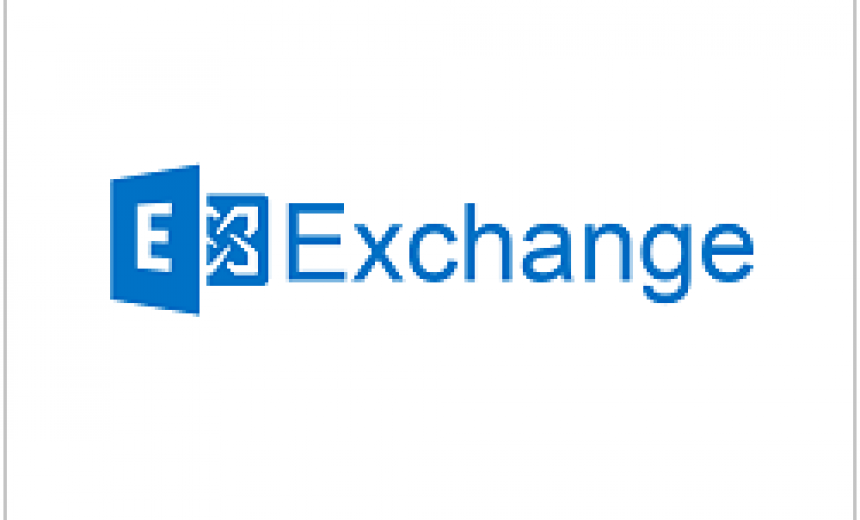System Requirements for Microsoft Exchange Server 2019

Before you plan your upgrade or a fresh installation of Exchange Server 2019, it’s important that you check out these system requirements from Microsoft so you can plan your installation accordingly. Microsoft just updated these requirements today.
Software Requirements
Microsoft encourages installing Exchange Server 2019 on a server running Windows Server Core, but you can’t run Exchange Server 2019 on a nano server.
| Exchange Component | Exchange Server 2019 Requirement |
| Mailbox and Edge Transport server roles | Windows Server 2019 Standard or Datacenter |
| Management tools | • Windows Server 2019 Standard or Datacenter • Windows 10 x64 |
Hardware Requirements
Microsoft supports the following hardware for Exchange Server 2019.
| Exchange Component | Exchange Server 2019 Requirement |
| Processor | • Intel processor that supports Intel 64 architecture • AMD processor that supports the AMD64 platform |
| Memory | • Mailbox role: at least 128GB is recommended • Edge Transport role: at least 64GB is recommended Exchange Server 2019 supports up to 256 GB RAM |
| Paging file size | 25% of installed memory is recommended (e.g. for 64GB RAM use 16GB page file) |
| Disk space | At least 30GB of free space on the drive where you’re installing Exchange • At least 200MB of free space on the system drive • At least 500MB on the drive containing the message queue database |
| Screen resolution | 1024 x 768 pixels (XGA) or higher |
| File system | NTFS is required on partitions that contain the following types of files: • The System partition • Exchange binaries • Files generated by Exchange diagnostic logging • Transport database files (for example, the mail queue database) Optionally, you can use ReFS on the partitions that contain the following types of files: • Mailbox databases and transaction logs. |
NOTE: Microsoft doesn’t support Exchange 2019 on Intel Itanium IA64 processors and recommends up to 2 processor sockets on a physical computer.
Coexistence with Previous Versions of Exchange
Only the following scenarios are supported by Microsoft for Exchange Server 2019 to coexist with previous versions.
| Exchange Version | Exchange 2019 Coexistence |
| Exchange Server 2010 and earlier | Not supported by Microsoft |
| Exchange Server 2013 | Supported with Exchange 2013 Cumulative Update 21 or later on all Exchange 2013 servers in the organization, including Edge Transport servers |
| Exchange Server 2016 | Supported with Exchange 2016 Cumulative Update 11 or later on all Exchange 2016 servers in the organization, including Edge Transport servers |
| Mixed Exchange Server 2013 and Exchange Server 2016 organization | Supported only if all Exchange 2013/2016 servers meet the requirements |
Requirements for Network and Active Directory Servers
For performance reasons, Microsoft recommends using 64-bit hardware running 64-bit versions of Windows Server. For security reasons, Microsoft discourages installing Exchange Server 2019 on Active Directory servers. It’s best to install Exchange on member severs. According to Microsoft, the following requirements apply to Exchange Server 2019.
| Network Component | Requirement for Exchange Server 2019 |
| Active Directory Domain Controllers (DCs) | The DCs must be running one of the following versions of Windows Server: • Windows Server 2019 Standard or Datacenter • Windows Server 2016 Standard or Datacenter • Windows Server 2012 R2 Standard or Datacenter |
| Active Directory forest functional level | Windows Server 2012 R2 or higher |
| Active Directory site | At least one writeable DC in the site that’s also a global catalog server is required at all times |
| DNS namespace | • Contiguous • Noncontiguous • Single label domains • Disjoint |
| IPv6 | IPv6 is only supported when IPv4 is also installed and enabled |
For more information, check out IPv6 Support in Exchange 2013 and Microsoft’s article KB2269838 for more information on DNS namespaces supported by Exchange. The IPv6 requirement of IPv4 presence applies to all versions of Exchange starting with Exchange 2013 version. Frankly, I don’t know why anyone will disable IPv4 if they want to connect to the Internet. As far as IPv6, it’s enabled on Windows clients and servers by default and you should leave them both enabled.
| WARNING! As a best practice, you should never disable IPv6 on a Windows computer (server or client). |
Additional Requirements
Other things to keep in mind:
- Make sure you are using the latest version of .NET Framework (4.7.2) that works with Exchange 2019.
- You can use Outlook 2013/2016/2019 client, Outlook 2016 for Mac, and Outlook for Mac for Office 365.
| Thanks for reading my article. If you are interested in IT training & consulting services, please reach out to me. Visit ZubairAlexander.com for information on my professional background. |
Copyright © 2018 SeattlePro Enterprises, LLC. All rights reserved.



If we have 1024 GB installed on exchange server what will be the recommended Pagesize memory?
@Tariq: You didn’t mention the version of your Exchange Server. In my article, I mentioned the recommended size of page file for Exchange 2019, which is 25% of the installed RAM.
For Exchange 2013 and 2016, if you have less than 32 GB of RAM, Microsoft recommends setting the paging file size to the physical RAM plus 10 MB, up to a maximum of 32 GB. If the amount of RAM is 32 GB or more, then set the page file to 32 GB. Hope this helps.